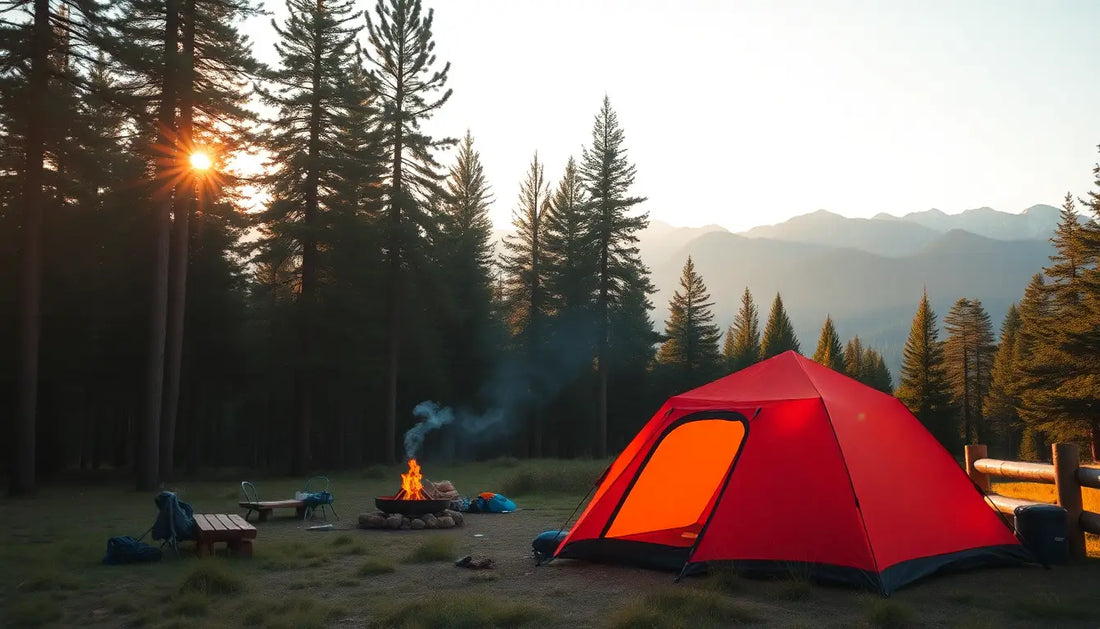
The Ultimate Checklist for a Perfect Camping Trip
TF AdventureEmbarking on a camping adventure is an exhilarating experience that allows you to reconnect with nature and create lasting memories. Whether you're a seasoned outdoor enthusiast or a first-time camper, having the right gear and preparation can make all the difference in ensuring a smooth and enjoyable trip. At TF Adventure, your one-stop shop for outdoor camping and mountain and jungle adventure equipment and accessories, we've compiled the ultimate checklist to help you plan and execute the perfect camping trip.
Choosing the Right Campsite
Selecting the perfect campsite is the foundation for a successful camping experience. Consider the following factors when choosing your campsite:
Location
Proximity to hiking trails, water sources, and scenic viewpoints can enhance your camping experience. Research the area beforehand to identify the best spots that align with your interests and activities.
Terrain
Look for a level, well-drained area to set up your tent. Avoid low-lying areas that may be prone to flooding or areas with excessive vegetation that could attract unwanted wildlife.
Accessibility
Ensure the campsite is easily accessible, with clear paths or roads leading to it. This will make it easier to transport your gear and supplies.
Permits and Regulations
Familiarize yourself with the local regulations and obtain any necessary permits for the area you plan to camp in. This will help you avoid any legal issues or fines.
Packing the Essentials
Packing the right gear is crucial for a comfortable and safe camping trip. Here's a comprehensive checklist to ensure you don't forget any essential items:
Shelter
- Tent: Choose a sturdy, weatherproof tent that can accommodate the number of people in your group.
- Sleeping Bag: Select a sleeping bag rated for the expected temperature range of your camping location.
- Sleeping Pad: Provide extra cushioning and insulation for a good night's sleep.
Cooking and Eating
- Camping Stove and Fuel: Ensure you have a reliable and efficient cooking setup.
- Cookware: Pots, pans, utensils, and plates/bowls for meal preparation and serving.
- Food and Water: Pack non-perishable, high-energy foods and plenty of water.
- Cooler and Ice: Keep perishable items fresh and cold.
Clothing and Footwear
- Base Layers: Moisture-wicking, quick-drying clothing to keep you comfortable.
- Insulating Layers: Warm, breathable layers to protect against changing weather conditions.
- Outer Layers: Waterproof and windproof jackets and pants.
- Sturdy Hiking Boots or Shoes: Provide support and traction for your outdoor activities.
- Extra Socks and Underwear: To keep your feet and body dry and comfortable.
Lighting and Navigation
- Flashlight or Headlamp: Ensure you have reliable lighting for nighttime activities.
- Lantern: Provide ambient lighting for your campsite.
- Compass and Map: Essential for navigating unfamiliar terrain.
- GPS Device or Smartphone with Offline Maps: Backup navigation tools.
First Aid and Safety
- First Aid Kit: Bandages, antiseptic, medications, and other essential medical supplies.
- Emergency Whistle and Flares: For signaling in case of emergencies.
- Fire Starter: Matches, lighters, or fire starters to ignite your campfire.
- Pocket Knife or Multi-Tool: Versatile tool for various tasks.
Personal Items
- Toiletries: Toothbrush, toothpaste, toilet paper, and other personal hygiene items.
- Sun Protection: Sunscreen, hat, and sunglasses to protect against UV rays.
- Insect Repellent: Keep mosquitoes and other bugs at bay.
- Camp Chairs or Hammock: For relaxing and enjoying your surroundings.
- Entertainment: Books, cards, or portable games to pass the time.
Setting Up Camp
Once you've arrived at your campsite, it's time to set up your camp. Follow these steps to ensure a smooth and efficient setup:
Tent Placement
Choose a level, well-drained area and clear any debris or rocks before setting up your tent. Ensure the tent is securely anchored to the ground.
Campfire Preparation
If permitted, create a designated fire pit or use a portable fire pit. Gather firewood, kindling, and fire-starting materials in advance.
Cooking Area
Establish a separate area for your cooking setup, ensuring it's a safe distance from your tent and any flammable materials.
Organization and Storage
Strategically place your gear and supplies for easy access. Use storage containers or bags to keep your campsite tidy and organized.
Enjoying the Great Outdoors
With your campsite set up and your gear in order, it's time to immerse yourself in the beauty of the great outdoors. Here are some tips to make the most of your camping experience:
Outdoor Activities
Explore hiking trails, go fishing, or participate in other activities that align with your interests and the local environment.
Leave No Trace
Practice the Leave No Trace principles by minimizing your impact on the natural surroundings. Pack out all your trash, and leave the campsite as you found it.
Campfire Safety
Carefully tend to your campfire, ensuring it's fully extinguished before going to bed or leaving the area.
Wildlife Awareness
Be mindful of your surroundings and take precautions to avoid encounters with wildlife. Store food and scented items properly to prevent attracting animals.
Preparing for the Elements
Camping often involves unpredictable weather conditions, so it's essential to be prepared for any eventuality. Monitor the forecast and have a plan in place to adapt to changing weather patterns.
Rain and Wind
Ensure your tent and rain gear can withstand heavy rain and strong winds. Be ready to adjust your campsite layout or seek shelter if necessary.
Cold Temperatures
Layer your clothing, use a warm sleeping bag, and consider bringing additional insulation to stay comfortable in colder climates.
Heat and Sun
Protect yourself from the sun's rays with sunscreen, hats, and lightweight, breathable clothing. Stay hydrated and seek shade when possible.
By following this comprehensive checklist, you'll be well on your way to planning and executing the perfect camping trip. Remember, the key to a successful outdoor adventure is thorough preparation and a willingness to adapt to the ever-changing natural environment. Happy camping!

